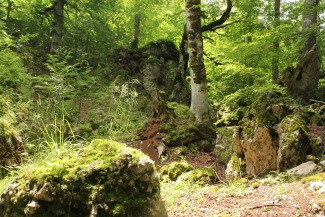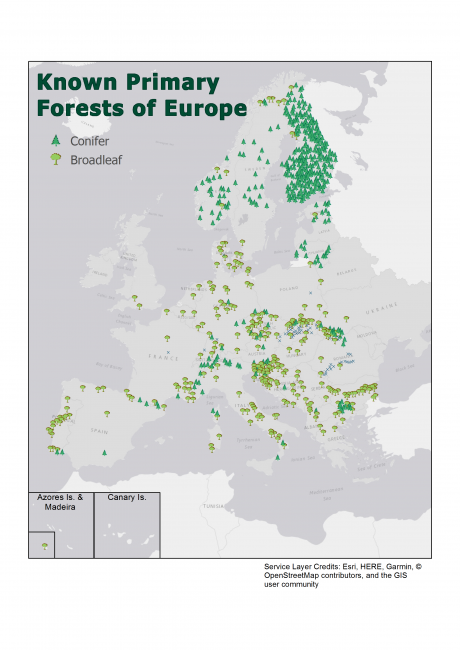Where are Europe’s last primary forests?

Researchers from the Geography Department of Humboldt-Universität zu Berlin led the creation of the first map of Europe’s last primary forests, including more than 1.4 million hectares in 34 European countries. “It is not that these forests were never touched by man, this would be hard to believe in Europe” explains Dr Francesco Maria Sabatini, lead author of the study. “Still, these are forests where there are no clearly visible indications of human activities, maybe because of decades of non-intervention, and where the ecological processes follow natural dynamics”. The compilation of the map was a huge task, according to the authors. “We contacted hundreds of forest scientists, experts and NGO activists from all over Europe asking to share information on where to find such forests in their country. Without their direct engagement we could have never been able to build our database, which is the most comprehensive ever compiled for Europe”.
The preservation of primary forest cannot be taken for granted, not even in Europe
The study, recently published in the journal Diversity & Distributions, highlights that primary forests in Europe are generally very rare, located in remote areas, and fragmented into small patches. The majority of these primary forests are small, fragmented, and interspersed in human-dominated landscapes, which makes them particularly prone to human disturbance. Even if the majority (89%) of the primary forest mapped is in protected areas, a high fraction (54%) is currently not under strict protection. This means that, at least in some European countries, timber harvesting or salvage logging may jeopardize the untouched nature of these forests. “Wide patches of primary forest are being currently logged in many mountain areas, for instance in Romania and Slovakia or in some Balkan countries. A soaring demand for bioenergy coupled with high rates of illegal logging, are leading to the destruction of this irreplaceable natural heritage, often without even understanding that the forest being cut is primary,” said Prof Miroslav Svoboda, University of Life Science in Prague (CZ), and co-author of the study.
How can the map help protecting primary forests? “We clearly demonstrated that the distribution of remaining primary forest is the result of centuries of land use and forest management,” said Dr Sabatini. In his view, understanding the anthropogenic pressures behind the current distribution of primary forests can inform protection and restoration efforts.
EFI researchers Dr. Hans Verkerk and Dr. Marcus Lindner contributed to the analysis of factors explaining the distribution of primary forests and provided insights to the management context. EFI also hosted the lead author Dr. Sabatini during a scientific visit.
Full reference
Sabatini, F. M., S. Burrascano, W. S. Keeton, C. Levers, M. Lindner, F. Pötzschner, P. J. Verkerk, J. Bauhus, E. Buchwald, O. Chaskovsky, N. Debaive, F. Horváth, M. Garbarino, N. Grigoriadis, F. Lombardi, I. M. Duarte, P. Meyer, R. Midteng, S. Mikac, M. Mikolas, R. Motta, G. Mozgeris, L. Nunes, M. Panayotov, P. Ódor, A. Ruete, B. Simovski, J. Stillhard, M. Svoboda, J. Szwagrzyk, O.-P. Tikkanen, R. Volosyanchuk, T. Vrska, T. M. Zlatanov, and T. Kuemmerle. 2018. Where are Europe’s last primary forests? Diversity and Distributions. doi:10.1111/ddi.12778
More info
The study is accessible here: https://doi.org/10.1111/ddi.12778
Link to the project: https://www.geographie.hu-berlin.de/en/professorships/biogeography/projects/forests
Link to Forest & co blog: https://forestsandco.wordpress.com/
The work has received funding from the European Union’s Horizon 2020 research and innovation programme under the Marie Sklodowska-Curie grant agreement No 658876.
Photo from Gran Sasso National Park by F.M.Sabatini.



